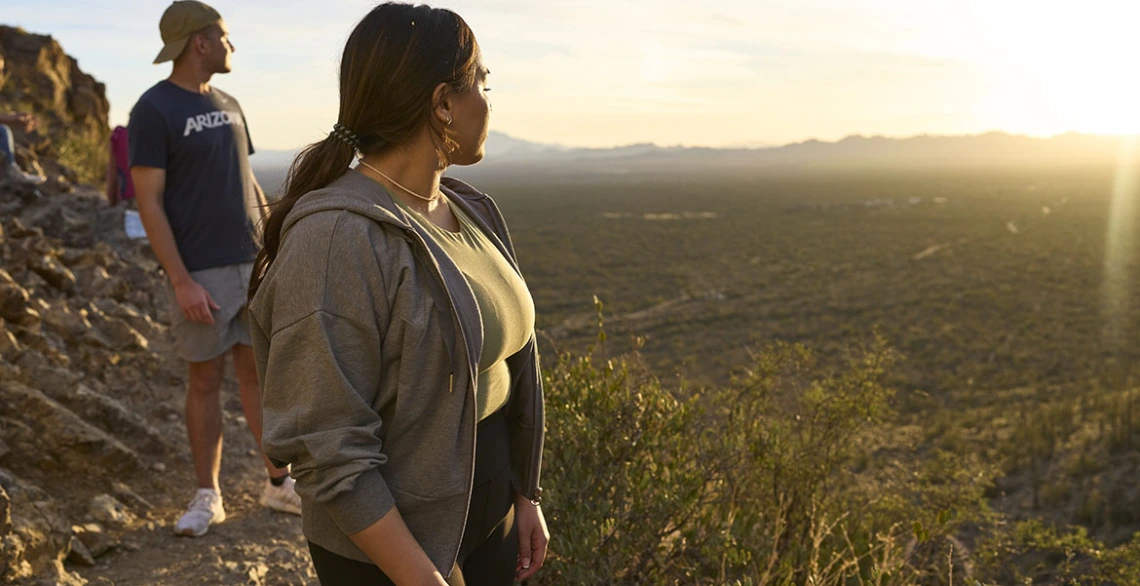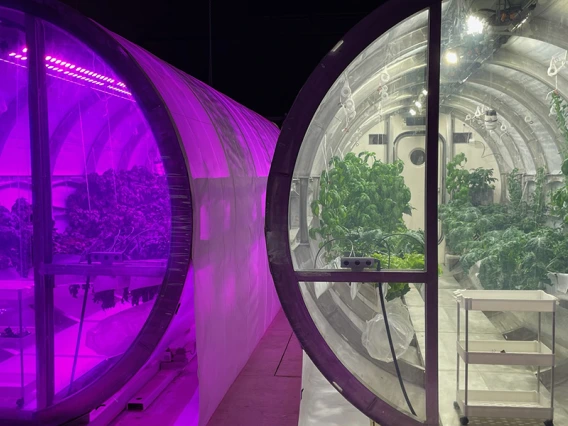$2.5M NSF award shifts engineering focus toward student strengths
About 50 undergraduates in Yuma and Tucson will receive scholarships up to $15K annually and benefit from unparalleled mentoring and professional development.

The eCAMINOS program serves Arizona’s students, strengthens the state’s engineering workforce and helps the University of Arizona fulfill its missions as a Hispanic Serving and land grant institution.
Engineering students often begin their studies with more skills and knowledge than they realize. And many find it difficult to picture themselves in engineering. The University of Arizona has established the eCAMINOS program to help students identify with engineering and recognize what they bring to the table.
Funded with nearly $2.5 million from the National Science Foundation, eCAMINOS began in fall 2024 at the Tucson and Yuma campuses. The program's name ("camino" means "path" in Spanish) represents engineering pathways, and its intention is to shift education away from addressing students' knowledge deficiencies and toward valuing strengths and experience. Studies indicate that this sort of mentoring approach helps create a more equitable playing field for students in engineering, including those from marginalized groups.
"One of the most important things we do as Arizona's flagship land-grant university is to mentor students in ways that inspire them and help them realize their own potential," said University of Arizona President Suresh Garimella. "As an engineer and an educator, I'm pleased to see pathways open for more students to pursue their goals. The eCAMINOS program will not only create opportunities to help them succeed in higher education, but also will prepare them for impactful future careers."
Asset-based rather than deficit-based thinking has been shown to be effective in promoting student success, said project lead Vignesh Subbian, associate professor of biomedical engineering and systems and industrial engineering and member of the university's BIO5 Institute.
"But little is known about how to do it longitudinally, throughout the student's engineering program. This project helps us do that," Subbian said.
The NSF grant funds scholarships and research into a model that systematically combines strengths-based mentoring with development of portfolios that showcase their skills, projects and achievements. Faculty will investigate longer-term outcomes, such as educational persistence and employment. The researchers aim to inspire significant change in educational approach to nurture a more inclusive learning environment in engineering, said Ann Shivers-McNair, a researcher involved in the study.
"We also hope that transformation will happen within the cohorts of students, as they share and reflect," said Shivers-McNair, associate professor of English and information science.
Financing meaningful scholarships
Sixty percent of the award is providing scholarships to undergraduates over a period of five to six years. Up to 50 students will receive a maximum of $15,000 each annually throughout their university education. Program leaders expect to serve 28 students from Yuma and 22 from the main campus in Tucson. Undergraduates in any engineering major who meet financial need and academic criteria are eligible to apply.
Many of the students are the first in their families to attend college, and they often expend considerable effort navigating a multitiered financial aid network, said Sam Peffers, director of Yuma's engineering programs and a professor of practice in systems and industrial engineering.
"This grant gives students a single source that fills unmet needs," he said. "That's time and effort they can put back into their studies."
Fortifying student identity
All U of A engineering undergraduates gain practical experience in the college's four-year design program, and many complete internships and join clubs that foster identity and leadership skills, such as the Society of Hispanic Professional Engineers.
The eCAMINOS program goes further. With guidance from faculty and academic advisers, students in the program create asset-based portfolios that showcase not only classroom work but also relevant life experiences, such as helping make community improvements and taking on leadership roles.
"Students put the portfolios together over time to reflect on their engineering identities and help lead them to the profession," Subbian said. "When students are ready for their careers, they have these portfolios that say, 'This is what I did in engineering; this is who I am.'"
Faculty involved in eCAMINOS are partnering with several Arizona employers to establish engineering internships geared to students in the third year of the program. NSF and Intel Corp. also are collaborating to provide additional semiconductor-specific educational and career resources to awardees in this group of STEM education grants.
As the two student cohorts progress through their studies, program researchers will study and compare the needs and assets of the two groups, striving to illuminate how different environments and perspectives affect outcomes.
Participation in eCAMINOS is expected to help students overcome common psychological barriers, said Peffers, who predicts the program will encourage more undergraduates to begin and complete engineering degrees in the next few years and ultimately fill gaps in the workforce.
"Sometimes, students are challenged to visualize themselves in engineering," he said. "There's a struggle with becoming a knowledge worker when they haven't seen others take that path. This model helps them realize what they're bringing to a sphere that initially feels alien."
A model for engineering educators
The remainder of the NSF award will support the research component and assessment of the program's efficacy in increasing student retention and placement in high-demand Arizona careers.
Program leaders intend to disseminate their findings regionally through the statewide consortium of Hispanic-Serving Institutions and nationally through engineering education societies.
Marla Franco, vice president for Hispanic Serving Institution Initiatives at the U of A, said helping transfer students – especially those pursuing STEM degrees – succeed is vital to the university's federal HSI designation.
"Supporting students from Yuma is also of great priority as an HSI, as we seek to increase access and opportunity in ways that affirm students' identities and acknowledge the vibrant communities where they reside," she said.
At the university's Yuma campus, students begin Bachelor of Science programs in engineering after transferring with two-year degrees from Arizona Western College, which shares the campus with the U of A, or Imperial Valley College in California. The University of Arizona Yuma offers programs in fields important to the community's economy – agriculture, health care, energy and the military – including degrees in industrial, systems, mechanical and software engineering.
Advancing the land-grant mission
David W. Hahn, the Craig M. Berge Dean of the College of Engineering, said eCAMINOS encourages more students to acquire critical knowledge to meet society's most pressing problems, a responsibility inherent in the university's land-grant mission.
"Engineering education is fundamental to the health and prosperity of Arizona's people," said Hahn. "This program greatly increases opportunity and stands to enrich our state with more engineers to improve agriculture, environmental and climate conditions, and contribute to critical industries like domestic semiconductor manufacturing."
This award was provided by the NSF under Grant No. 2322673.



